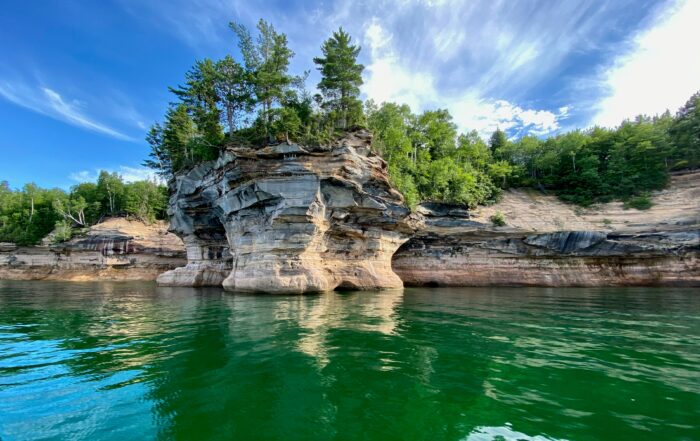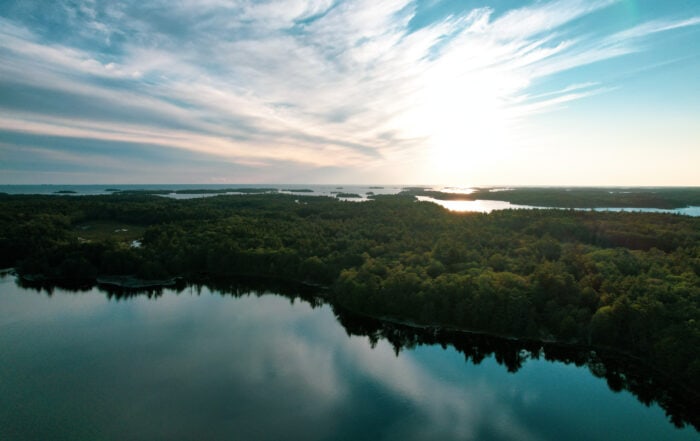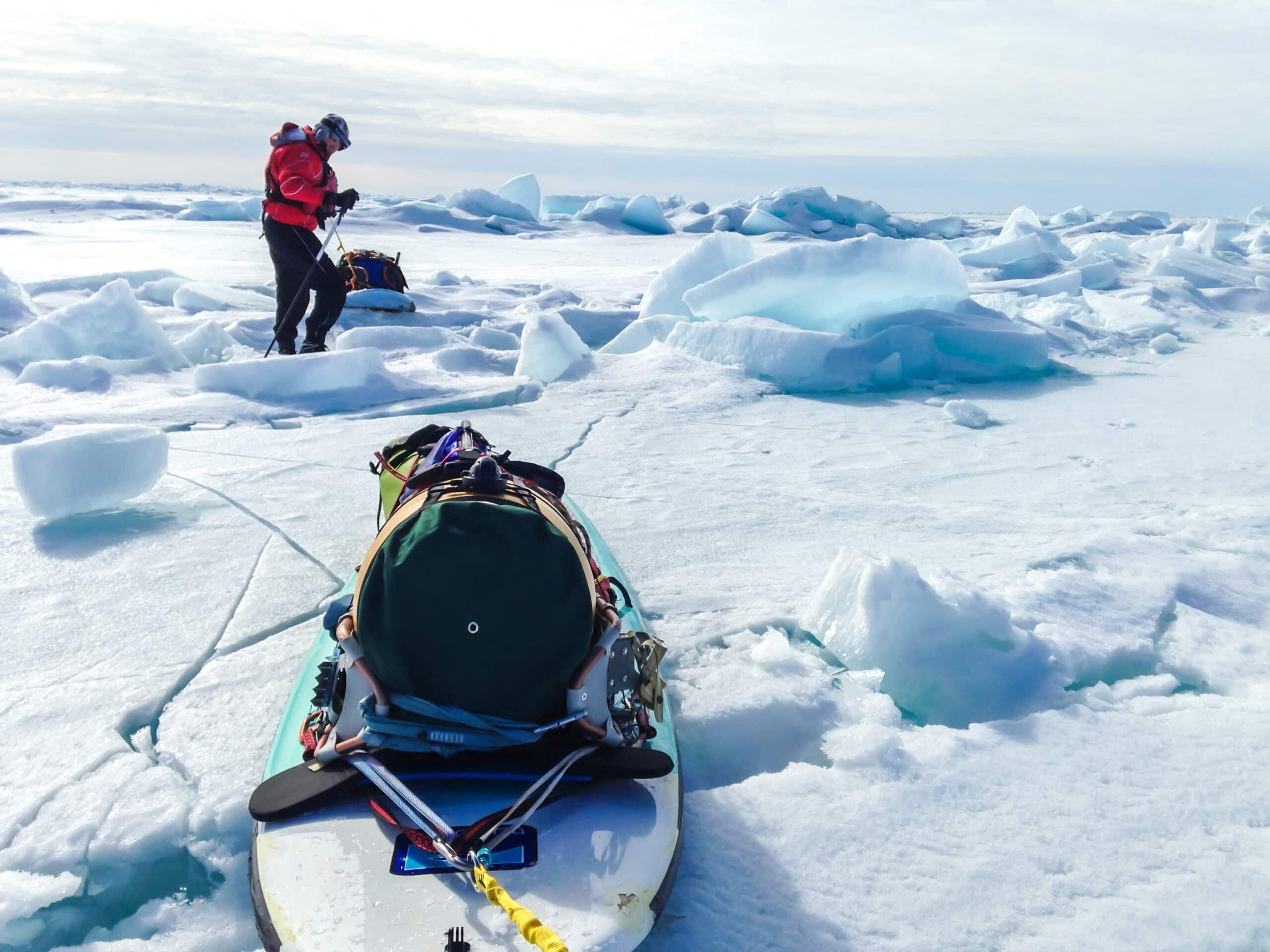
Negotiating over Hummock ridges near the middle of Georgian Bay in 2015.
We woke up to the sound of open water that hadn’t existed the night before, lapping the edges of the ice not far from our bivouac. My expedition partner, Zane Davies, and I were camped more than twenty kilometres off the cape of Neyaashiinigmiing, adrift on the ice floes during our first night of a three-day winter crossing of a nearly frozen Georgian Bay.
It was too dark to see where the sound was coming from. Distinct from the heavy rattling of our tarp in the wind earlier that night, though no less alerting. At first light, we saw the thin vein of open water about twelve metres from us, spanning about two and a half metres across. Our GPS indicated we had drifted backwards, more than a kilometre away from our goal. It was obvious the vein didn’t measure the amount of distance we’d travelled in our sleep. There had to be more open water out there ahead of us.
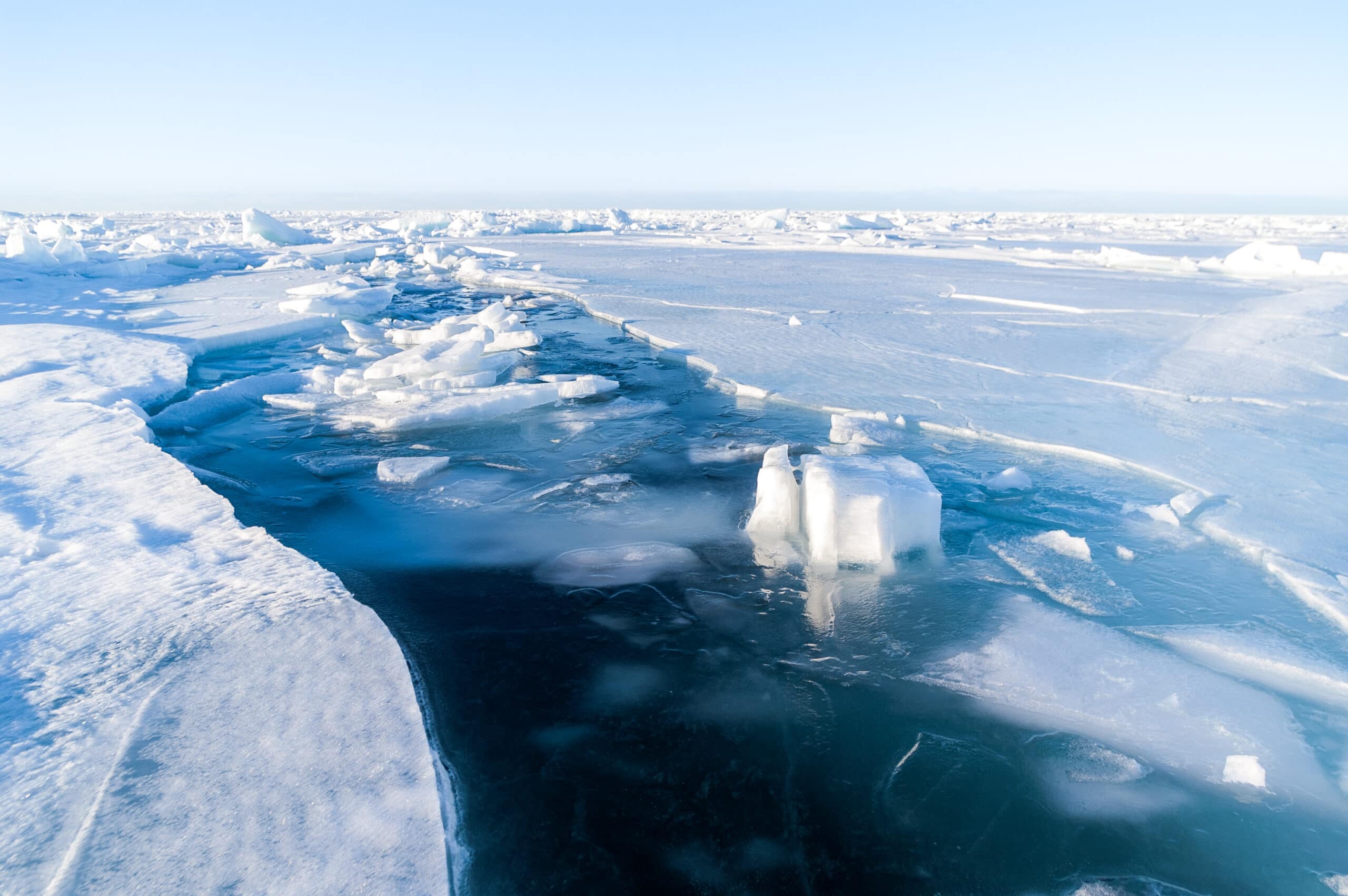
Landscapes of water. Aqua-firma, middle of Georgian Bay, 2015.
We crossed the Georgian Bay on modified standup paddle boards that combined as hauling sleds, in March of 2015. That year, the Great Lakes ice cover had peaked at more than 85 per cent, marking the sixth such occurrence in four decades. The running average ice extent has hovered around 50 per cent since records began in 1973.
The crossing, for me, was an inquiry into the seasonal and perennial nature of the heart of Georgian Bay. That year was the warmest on record at the time. It really felt like something that may never be possible again in my lifetime, not knowing how many more deep freezes would happen in my future.
Ice cover provides an important regenerative influence on the environment. It also has historical and cultural significance for communities that live year-round on the remote islands and shorelines. In communities such as Chimnissing and for full-timers living on the remote islands near Sans Souci year-round, ice represents the only way in and out.
At that time, I understood that the odds of having the ice and weather conditions needed to make a successful and relatively safe winter crossing of the Bay were one in a million. The long-term trends were already revealing a decline in ice cover across the Great Lakes spanning over decades.
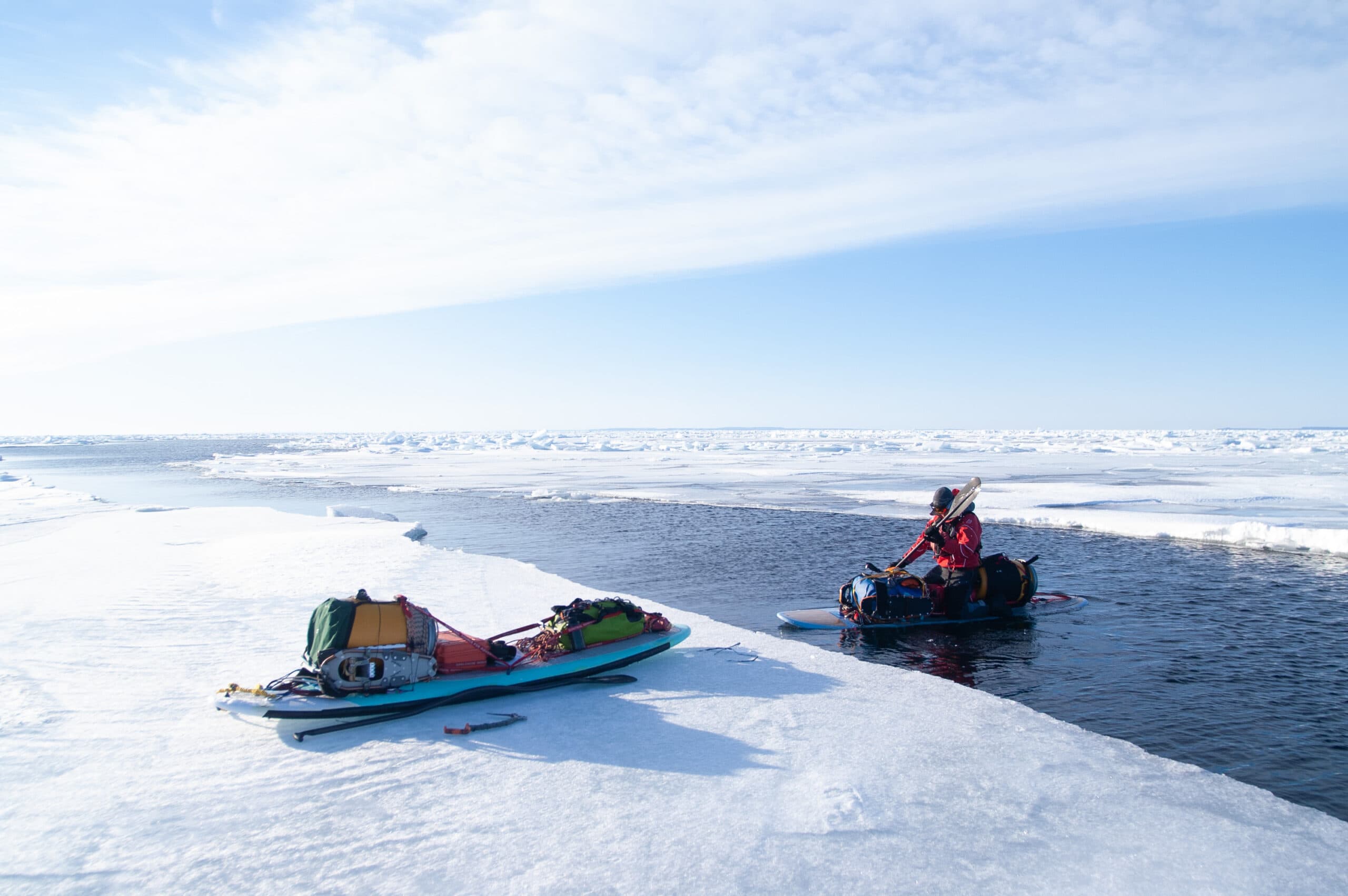
Zane Davies navigates over a bleed of open water during a winter crossing of Georgian Bay on March 12, 2015.
While the Great Lakes may have completely frozen over in the past, the likelihood of complete freezes reoccurring decreases every year, with total ice cover dropping at a rate of five per cent per decade according to the National Oceanic Atmospheric Administration’s (NOAA) Great Lakes Environmental Research Laboratory. That means maximum ice cover has already dropped by 25 per cent over the past 50 years. In fact, the greatest impression the crossing had on me was imprinted the moment we stepped off the ice floes at the Western Islands on March 12, 2015, as they began to break up behind us — closing the door, so to speak. Nine winters later, the window of opportunity for a reasonable crossing hasn’t re-opened since.
Fast forward to 2024. NOAA reported that this winter’s ice coverage across the Great Lakes as a whole has hit a historic low, measuring at 2.7 per cent on Feb. 11, 2024.
Lake Ontario, at a mere 1.7 per cent and Lake Erie, at 0.05 per cent remain relatively ice-free. “We’ve crossed a threshold in which we are at a historic low for ice cover for the Great Lakes as a whole,” says the Great Lakes Environmental Research Laboratory’s Bryan Mroczka, a scientist with the Physical and Ecological Modeling and Forecasting branch. “We have never seen ice levels this low in mid-February on the lakes since our records began in 1973.” An absence of ice cover is an existential change for the entire Great Lakes basin and bears a strong influence on water level fluctuations across the watershed.
Researcher Lauren Fry, from the same lab, explains, “Evaporation happens when there is a large temperature difference between the air and water. We tend to see the highest evaporation rates during the fall and early winter when the surface water is relatively warm and cold blasts of Arctic air enter the basin.”
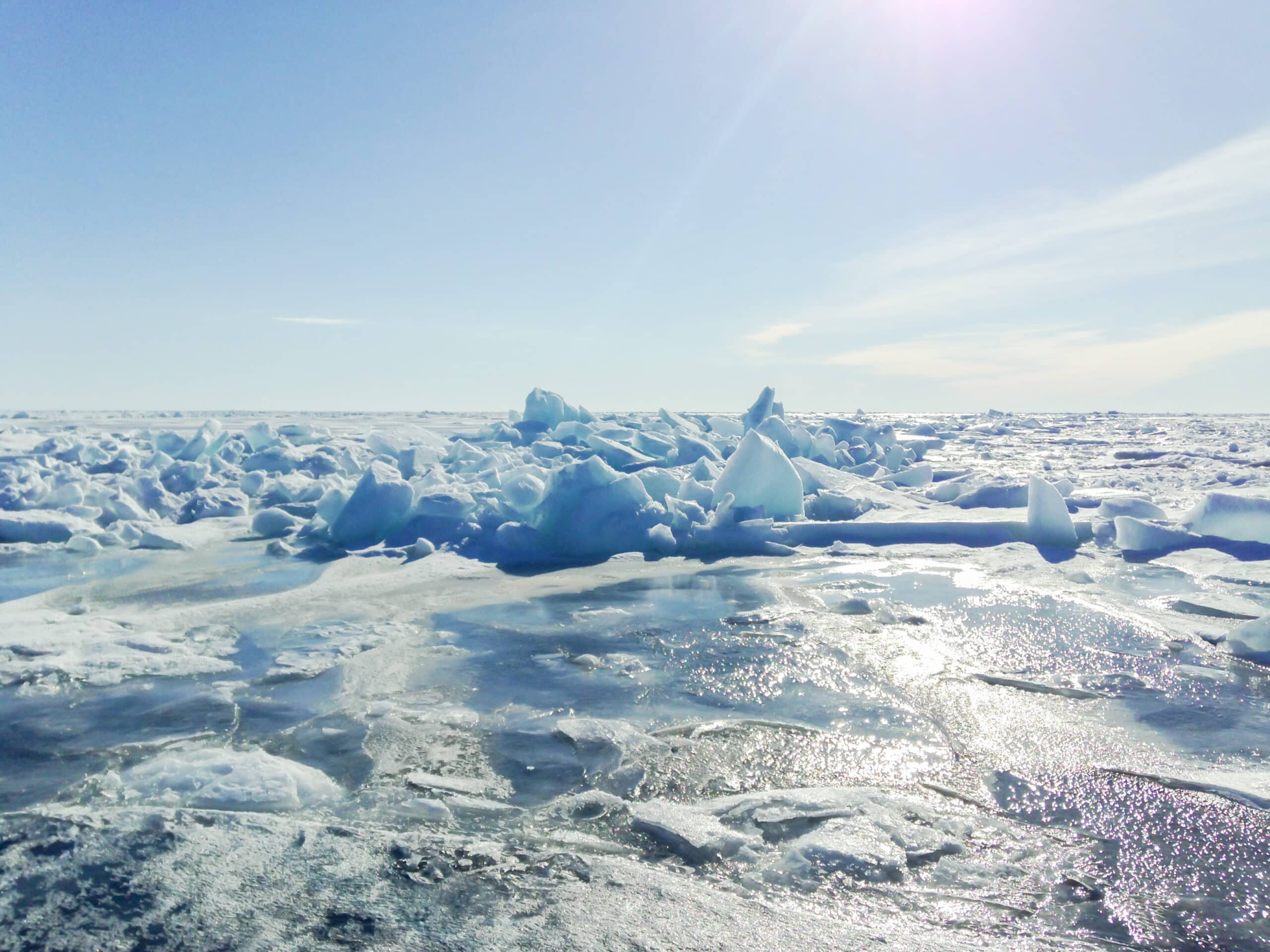
Landscapes of water. Aqua-firma, middle of Georgian Bay, 2015
Evaporation isn’t the only environmental mechanism the freeze-up helps regulate. Ice cover also protects sensitive coastal environments from erosion and degradation of shoreline habitat due to winter storms.
Fish species native to the Great Lakes, like lake whitefish and cisco, depend on ice cover over the shallow bays and reefs for protection. Katrina Keeshig of Neyaashiinigmiing, lead technician of the Coastal Waters Monitoring Program, explains how the ice cover protects them. “A lot of the eggs get deposited on the shoals — it’s the shallower areas that get way more wave activity — and the eggs get battered around. Ice cover kind of gives it that blanket, that protection,” she says. “It creates that controlled environment so that they can develop along their timelines.”
NOAA researchers say that though year-to-year variations in ice cover on the Great Lakes is normal, patterns indicate a measurable decline leaning toward a future with no ice in many bays along the shores of the Great Lakes. “In direct response to warming air temperatures, we are observing rapid ice loss and warming summer water temperatures,” said Professor Sapna Sharma, an expert in environmental stressors on lakes at York University in Toronto. “If the planet continues to warm, 215,000 lakes may no longer freeze every winter and almost 5,700 lakes may permanently lose ice cover by the end of the century.”
Lake Superior, Michigan, Huron, Erie and Ontario are connected by smaller lakes and rivers and span a combined surface area of 244,110 square kilometres — the largest freshwater system in the world. In years with little or no ice cover, the lakes experience warmer waters, higher evaporation rates and lower oxygen levels, making it harder for native coldwater fish to thrive. This causes ripple-effects through the entire food chain. If the fish depend on ice and the ice no longer returns, what does it mean for their future? How will they adapt? Or will they?
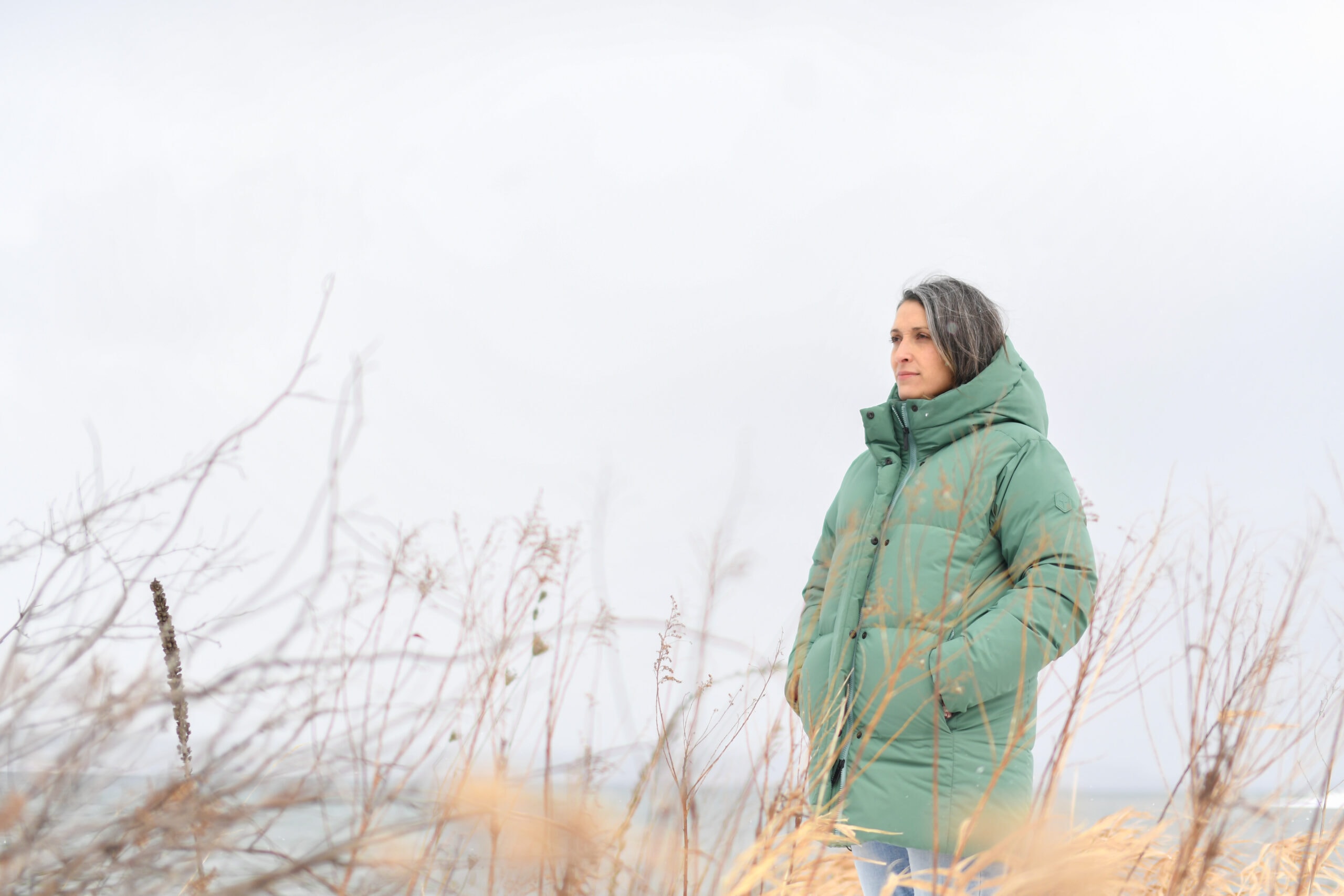
Katrina Keeshig watches over one of CWMP’s monitoring sites at Colpoys Bay. February 2024.
Elder and Knowledge Keeper Miptoon Chegahno, also from Neyaashiinigmiing, looks to the land to guide his understanding about what is happening to our winters on the Great Lakes. When I asked him what he thought about the historic loss of ice cover across the region, he first had me look at how we manage land development and how we relate to the land in our society.
On a drive around the territory, Chegahno stops and points out previously developed lands that have been left untouched for some time, replenishing with stands of trembling aspens and sumac.
“A long time ago, the Elders used to sit underneath trembling aspens,” explains Chegahno. “When the wind blows through it, it allows you to close your eyes and meditate. Chegahno points out how the way we manage land development has a direct impact on the environment.
He teaches that when societal habitats radically change, problems arise in the environment. So, we need to do rigorous environmental assessments before starting new community developments to ensure healthy collaboration with the natural world. “If we let the earth regenerate, it can provide something good for us,” says Chegahno, “but we don’t. What we do to the land, naturally will find its way to the water.”
“A lot of First Nations have called Georgian Bay ‘the big bay that never freezes over’ in their languages,” Chegahno explains. He takes me to a few bays around the territory at Neyaashiinigmiing that would have historically frozen over in his lifetime. None of them had any ice cover.
Chegahno describes the beauty of when Georgian Bay freezes. “It makes the greatest looking natural ice sculptures — all multi-coloured.”
He recounts, “the odd time we used to go to Hay Island, way back before ATVs, and one of the Elders used to walk across there. His name was Leslie Pedoniquotte and he was going to shoot a deer, drag it across, which is about a [2.5 kilometre] walk.” The ice facilitates a seasonal connection to land that likely won’t be possible again without major changes to combat climate change.
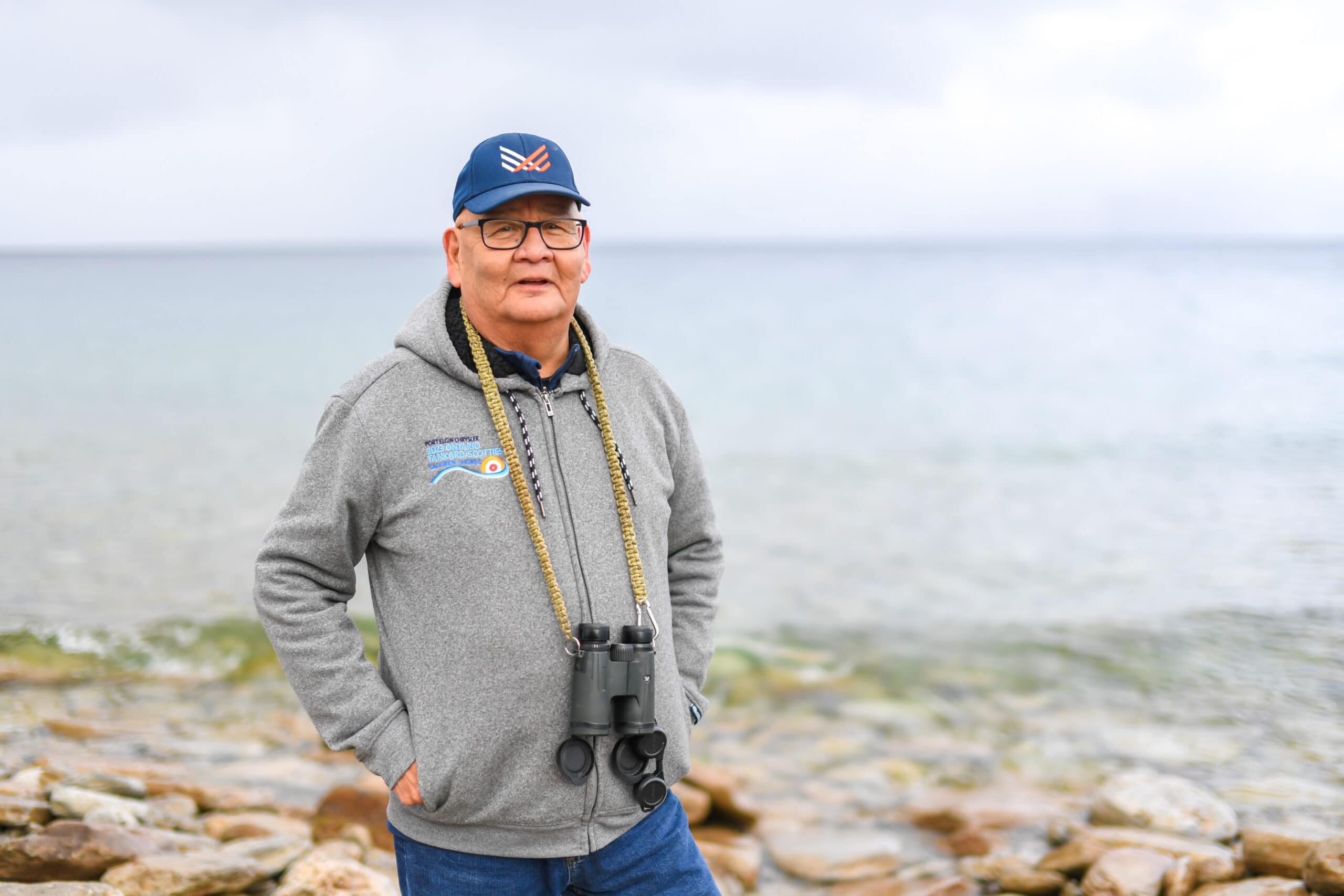
Elder and Knowledge Keeper Miptoon Chegahno, Neyaashiinigmiing, February 2024.
Despite the Great Lakes reaching nearly 89 per cent ice cover that winter, 2015 was also globally the hottest year in recorded history — a record that has been broken almost every year since. While the Great Lakes region chilled beneath a frosty veil, the planet around it was the warmest ever.
The cold that hailed the deep freeze-ups of 2014 and 2015 were generated by rogue meteorological variances known as a polar vortex. It took hold over the Great Lakes basin.
Meteorologist Bob Henson says these colder winters over the Great Lakes, including the winter of 2019, were influenced by disruptions to the polar vortex in the stratosphere. “The polar vortex is a loop of winds that encircles the North Pole. This loop of winds can stretch,” Henson told Yale Climate Connections. Some scientists suggest that warping of the polar vortex is occurring more frequently as the earth’s climate warms. Data gathered over two decades initially supported that theory.
“One school of research has found that warming in the Arctic may be causing weather torquing of the jet stream to pull cold air down more often and perhaps intensify cold and snow,” said Henson. However, there isn’t yet enough long-term evidence that can distinctly separate the anomalous warping of the polar vortex during certain years from natural variability.
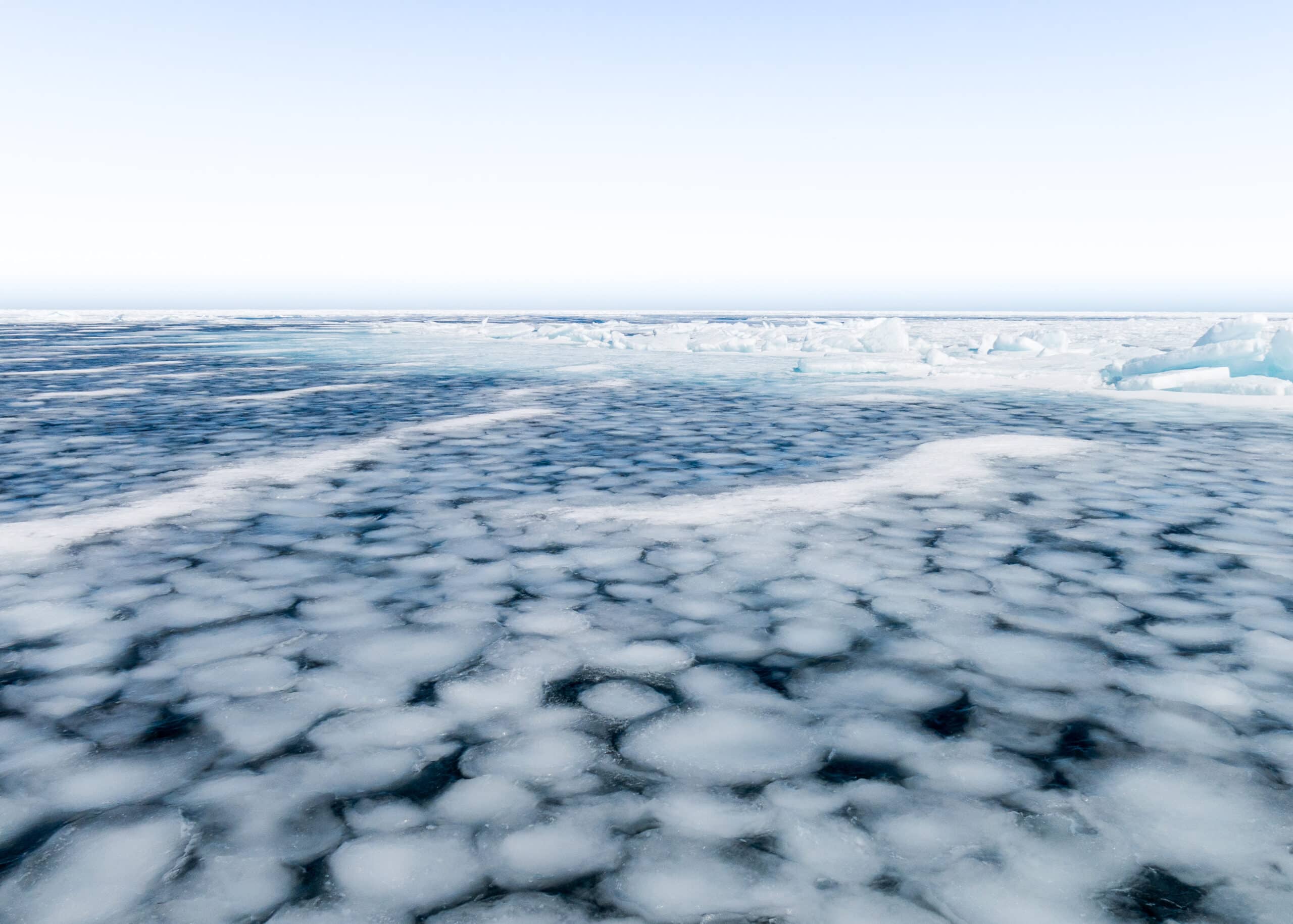
Landscapes of water. Aqua-firma, middle of Georgian Bay, circa 2015
Despite the Great Lakes reaching nearly 89 per cent ice cover that winter, 2015 was also globally the hottest year in recorded history — a record that has been broken almost every year since. While the Great Lakes region chilled beneath a frosty veil, the planet around it was the warmest ever.
The cold that hailed the deep freeze-ups of 2014 and 2015 were generated by rogue meteorological variances known as a polar vortex. It took hold over the Great Lakes basin.
Meteorologist Bob Henson says these colder winters over the Great Lakes, including the winter of 2019, were influenced by disruptions to the polar vortex in the stratosphere. “The polar vortex is a loop of winds that encircles the North Pole. This loop of winds can stretch,” Henson told Yale Climate Connections. Some scientists suggest that warping of the polar vortex is occurring more frequently as the earth’s climate warms. Data gathered over two decades initially supported that theory.
“One school of research has found that warming in the Arctic may be causing weather torquing of the jet stream to pull cold air down more often and perhaps intensify cold and snow,” said Henson. However, there isn’t yet enough long-term evidence that can distinctly separate the anomalous warping of the polar vortex during certain years from natural variability.
After breaking camp that morning, on the floes off the coast of Neyaashiinigmiing, Zane Davies and I made quick work crossing the vein of open water, advancing through fields of smooth ice, encircled with hummock ridges. A river of exposed water soon came into view, revealing itself over our right shoulders. At a distance, we could determine one daunting characteristic. It was big.
We transitioned onto the open water and paddled amidst an enigmatic environment, across the exposed heart of the Bay. Without question, this was a surreal and unforgettable sequence of paddle strokes for us both — planted between thousands of steps across a partially frozen freshwater sea.
At home on the Saugeen Peninsula, surrounded by open water, at present, I can’t help but feel an existential absence during these past winter months. I have missed the silence of the frozen lake and the stillness of the cold that protects the hiemal incubation of her babies beneath the surface. It is disquieting to imagine a future for the Great Lakes without ice cover. I hope to see the deep freeze return one day, for the sake of all life beneath the surface that depends on it for refuge, and for the communities whose lives and cultural ways have been shaped by her winters. I also hope that native species adapt and evolve with whatever changes lie ahead.
Meanwhile, I’ll be trembling beneath the aspens.

